A groundbreaking study proposes that spacetime is made of small, indivisible units, potentially explaining gravity through quantum theory.


Please join my mailing list here 👉 https://briankeating.com/list to win a meteorite 💥
Sabine (@SabineHossenfelder) argues that superdeterminism eliminates free will, challenging the idea of causal choice and possibly undermining science if the laws of physics govern all phenomena. However, inspired by daily life experiences in Southern California, I present a defense of indeterminism, countering the claim that everything is predetermined, while also exploring the ideas of cosmologists Raphael Bousso and Alan Guth.
Sabine Hossenfelder, a theoretical physicist, has argued in favor of superdeterminism, a theory that suggests the universe is deterministic and that our choices are predetermined.
Does Superdeterminism save Quantum Mechanics? Or does it kill free will and destroy science? https://www.youtube.com/watch?v=ytyjgIyegDI
According to her, the apparent randomness in quantum mechanics is an illusion, and the universe is actually a predetermined, clockwork-like system. She claims that if we knew enough about the initial conditions of the universe, we could predict every event, including human decisions.
Hossenfelder’s argument relies on the idea that the randomness in quantum mechanics is not fundamental, but rather a result of our lack of knowledge about the underlying variables. She suggests that if we could access these “hidden variables,” we would find that the universe is deterministic. However, this argument is flawed.
For example, consider the double-slit experiment, where particles passing through two slits create an interference pattern on a screen. Hossenfelder would argue that the particles’ behavior is predetermined, and that the apparent randomness is due to our lack of knowledge about the initial conditions. However, this ignores the fact that the act of observation itself can change the outcome of the experiment, a phenomenon known as wave function collapse.
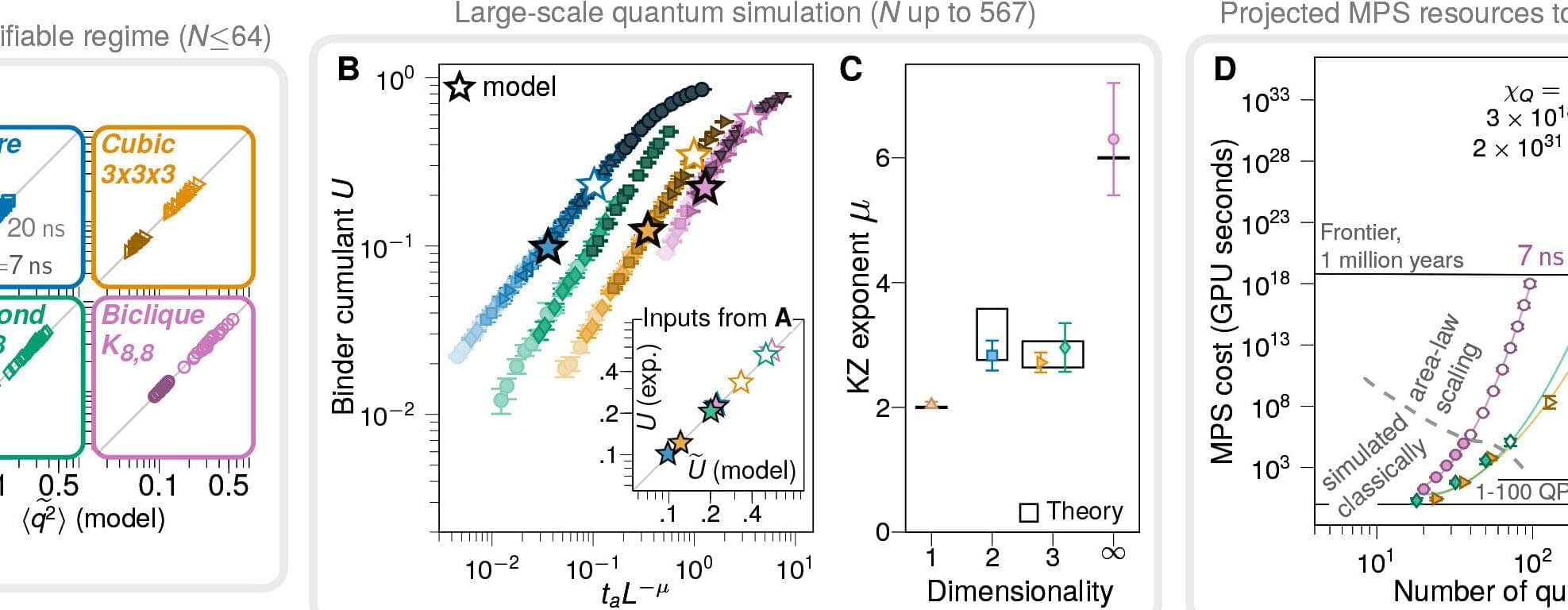
A team of quantum computer researchers at quantum computer maker D-Wave, working with an international team of physicists and engineers, is claiming that its latest quantum processor has been used to run a quantum simulation faster than could be done with a classical computer.
In their paper published in the journal Science, the group describes how they ran a quantum version of a mathematical approximation regarding how matter behaves when it changes states, such as from a gas to a liquid—in a way that they claim would be nearly impossible to conduct on a traditional computer.
Over the past several years, D-Wave has been working on developing quantum annealers, which are a subtype of quantum computer created to solve very specific types of problems. Notably, landmark claims made by researchers at the company have at times been met with skepticism by others in the field.
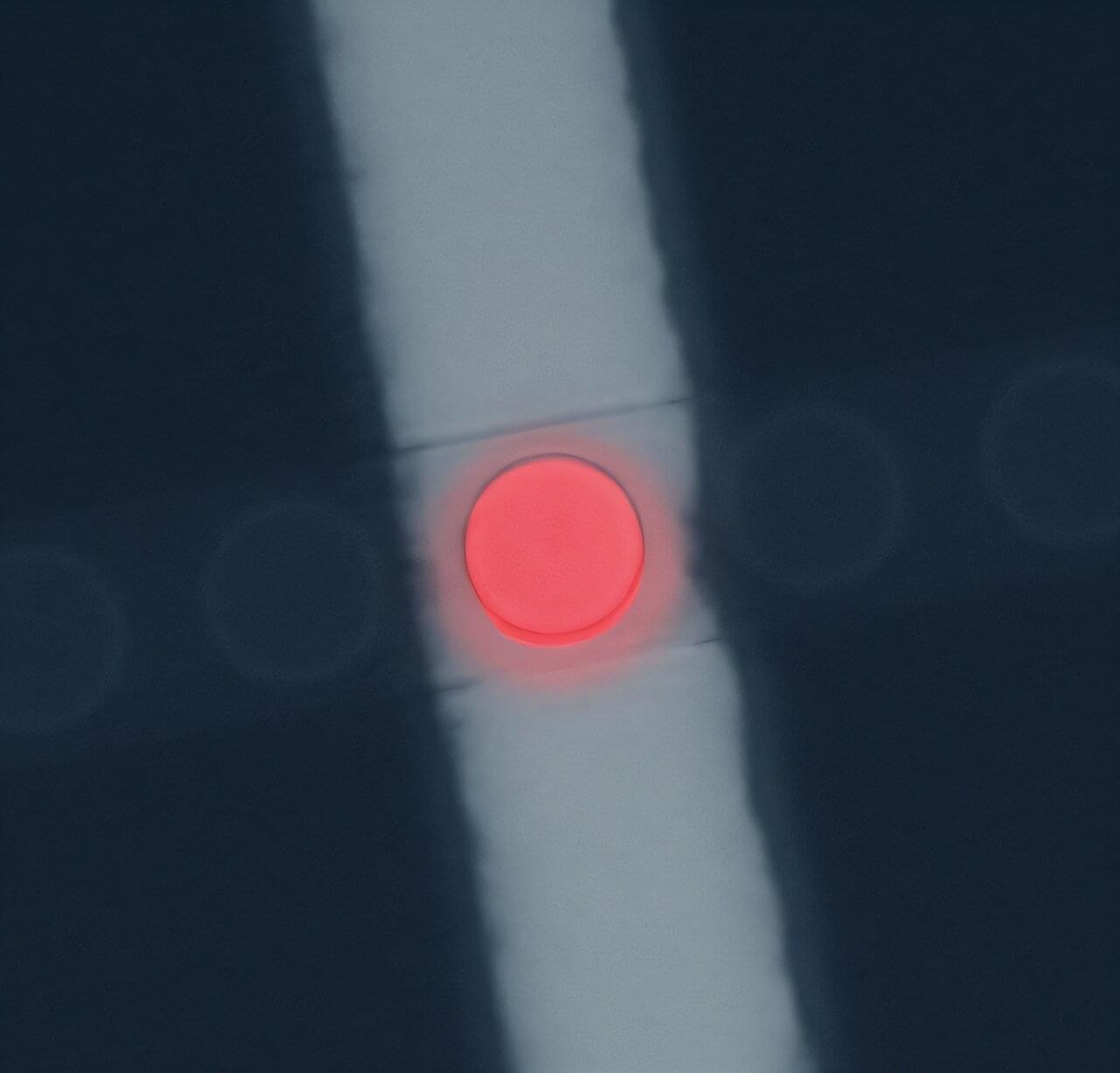
Light-emitting diodes (LEDs) are widely used electroluminescent devices that emit light in response to an applied electric voltage. These devices are central components of various electronic and optoelectronic technologies, including displays, sensors and communication systems.
Over the past decades, some engineers have been developing alternative LEDs known as quantum LEDs (QLEDs), which utilize quantum dots (i.e., nm-size semiconducting particles) as light-emitting components instead of conventional semiconductors. Compared to traditional LEDs, these quantum dot-based devices could achieve better energy-efficiencies and operational stabilities.
Despite their potential, most QLEDs developed so far have been found to have significantly slower response speeds than typical LEDs using inorganic III-V semiconductors. In other words, they are known to take a longer time to emit light in response to an applied electrical voltage.
What excites you the most about the potential of quantum computers?
💡 Future Business Tech explores AI, emerging technologies, and future technologies.
SUBSCRIBE: https://bit.ly/3geLDGO
This video explores the future of quantum computing. Related terms: ai, future business tech, future technology, future tech, future business technologies, future technologies, quantum computing, etc.
ℹ️ Some links are affiliate links. They cost you nothing extra but help support the channel so I can create more videos like this.
#technology #quantumcomputing
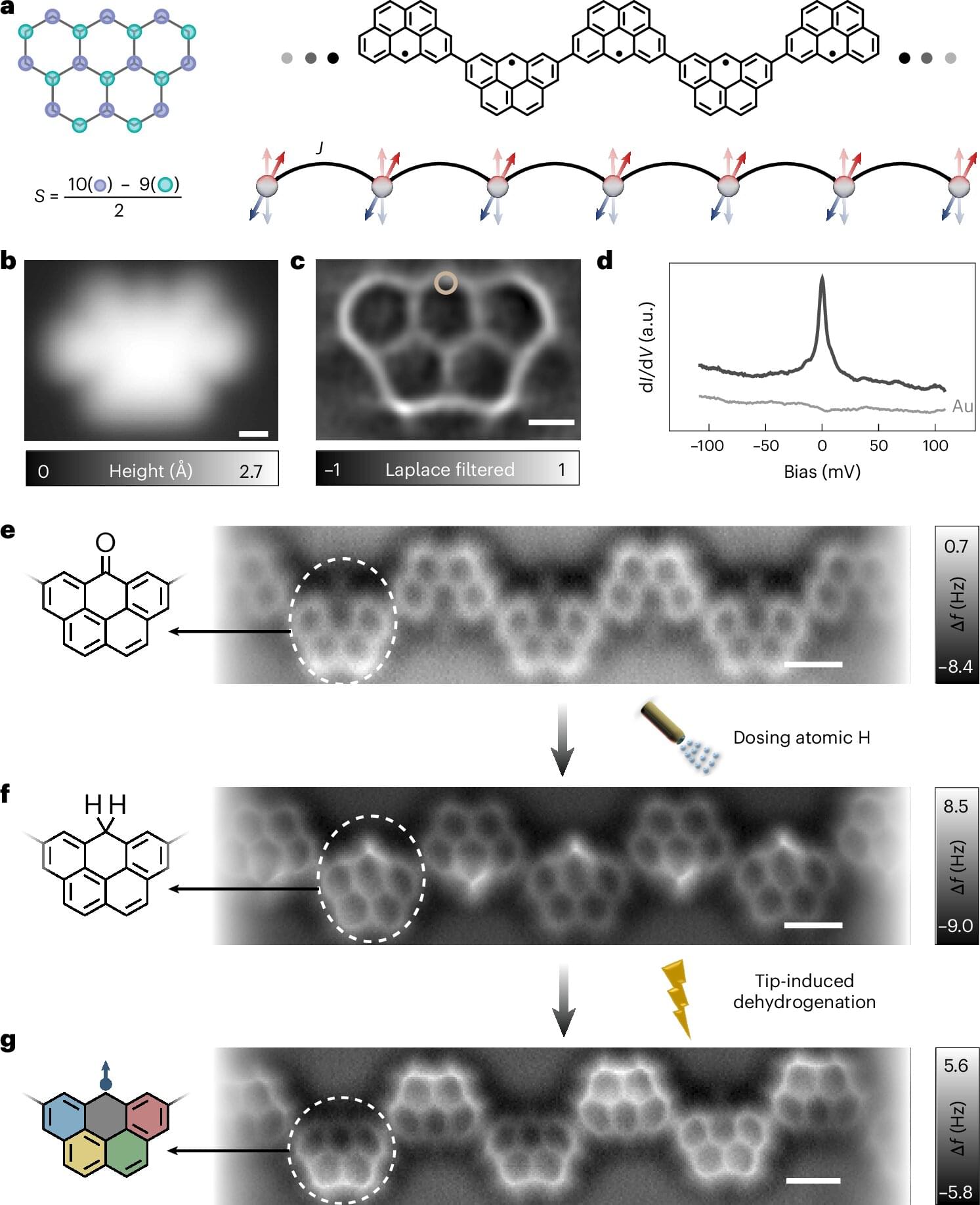
In a new publication in Nature Materials, an international team of researchers has developed groundbreaking artificial chains of the iconic “olympicene” molecules to realize the antiferromagnetic (AF) spin-½ Heisenberg model, a flagship quantum spin model that has been the cornerstone of quantum magnetism, since the seminal work of Bethe, for almost a century now. This study makes nanographenes (NGs) an ideal platform for realizing and studying highly entangled quantum spin systems, with potential applications in insulator-based AF spintronics.
In one-dimensional quantum magnets, strong quantum fluctuations prevent spontaneous symmetry breaking, leading to the formation of quantum-disordered many-body states such as resonating valence bond states. Half-integer spin chains are expected to exhibit a gapless excitation spectrum in the thermal dynamic limit, with the elemental excitations comprising at least two fractional spin-½ with well-defined energy-momentum relation, known as spinons.
In finite length, confinement effects introduce a quantization gap, which gradually approaches zero as the chain length increases (L→∞). Despite the theoretical appeal, the experimental realization of the isotropic spin-½ Heisenberg model faces significant challenges. Furthermore, the lack of access to well-defined finite chains hampers systematic studies on how spin excitations evolve with chain length and how even-and odd-numbered chains exhibit distinct behaviors.

Time crystals realized in the so-called quasiperiodic regime hold promise for future applications in quantum computing and sensing.
In ordinary crystals, atoms or molecules form a repeating pattern in space. By extension, in quantum systems known as time crystals, particles form a repeating pattern in both space and time. These exotic systems were predicted in 2012 and first demonstrated in 2016 (see Viewpoint: How to Create a Time Crystal). Now Chong Zu at Washington University in St. Louis and his colleagues have experimentally realized a new form of time crystal called a discrete-time quasicrystal [1]. The team suggests that such states could be useful for high-precision sensing and advanced signal processing.
Conventional time crystals are created by subjecting a collection of particles to an external driving force that is periodic in time. Zu and his colleagues instead selected a quasiperiodic drive in the form of a structured but nonrepeating sequence of microwave pulses. The researchers applied this quasiperiodic drive to an ensemble of strongly interacting spins associated with structural defects, known as nitrogen-vacancy centers, in diamond. They then tracked the resulting dynamics of these spins using a laser microscope.
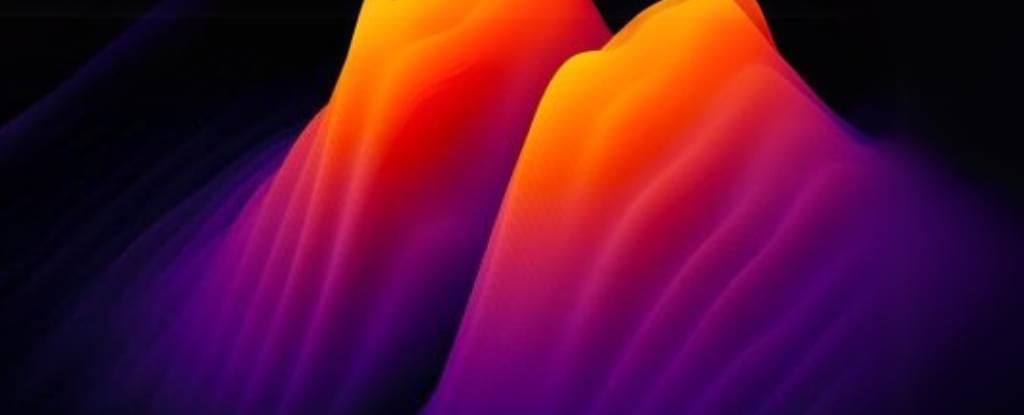
Supersolids are a strange quantum state of matter that combines properties of solids and liquids.
Now they’ve gotten even more mind-bending, as scientists have transformed light itself into a supersolid. It’s a breakthrough that could lead to new quantum and photonic technologies.
Beyond the everyday solids, liquids, gases, and plasmas, an entire zoo of exotic states of matter exists. Long theorized but only recently created, a supersolid has a crystalline structure like a regular solid, but it can also, counterintuitively, flow freely like a fluid.
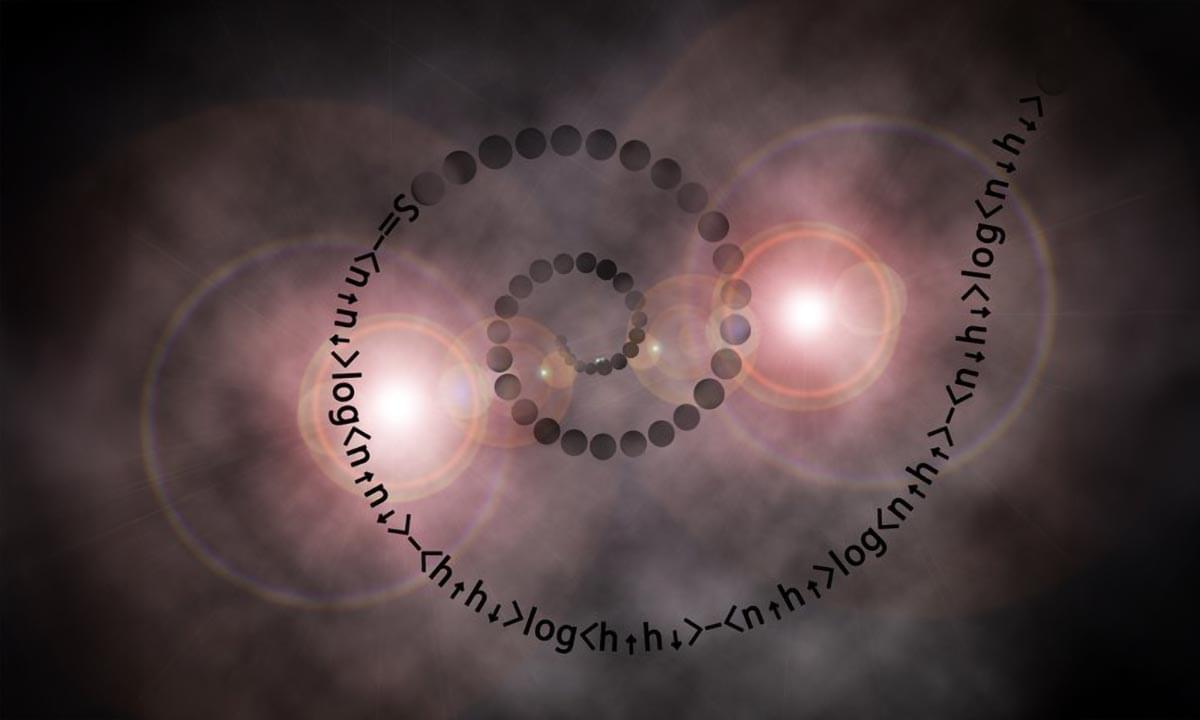
Physicists in Japan have developed streamlined formulas to measure quantum entanglement, revealing surprising quantum interactions in nanoscale.
The term “nanoscale” refers to dimensions that are measured in nanometers (nm), with one nanometer equaling one-billionth of a meter. This scale encompasses sizes from approximately 1 to 100 nanometers, where unique physical, chemical, and biological properties emerge that are not present in bulk materials. At the nanoscale, materials exhibit phenomena such as quantum effects and increased surface area to volume ratios, which can significantly alter their optical, electrical, and magnetic behaviors. These characteristics make nanoscale materials highly valuable for a wide range of applications, including electronics, medicine, and materials science.

Scientists have devised a way to store and read data from individual atoms embedded in tiny crystals only a few millimeters in size (where 1 mm is 0.04 inches). If scaled up, it could one day lead to ultra-high density storage systems capable of holding petabytes of data on a single disc — where 1 PB is equivalent to approximately 5,000 4K movies.
Encoding data as 1s and 0s is as old as the entire history of computing, with the only difference being the medium used to store this data — moving from vacuum tubes flashing on and off, tiny electronic transistors, or even compact discs (CDs), with pits in the surface representing 1s and smoothness indicating 0.